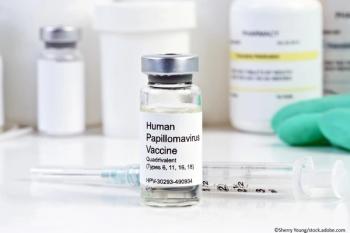
Hepatitis C Treatment Options: 5 Direct Questions
An HCV-infected patient who still injects drugs wants to start direct-acting antiviral therapy. What do guidelines recommend?
This month’s quiz focuses on HCV guidelines for treatment, including options for patients with decompensated cirrhosis or severe renal impairment, management of persons who report injection drug use, resistance testing before starting therapy, and more. Ready to get started?
1. According to treatment guidelines, how long should treatment with the combination of ledipasvir and sofosbuvir be continued in a noncirrhotic patient with HCV genotype 1 and a baseline HCV RNA of less than 1 million IU/mL who has not previously received direct acting antiviral (DAA) therapy?
A. 8 weeks
B. 12 weeks
C. 24 weeks
D. 8, 12, or 24 weeks
Answer: A. 8 weeks
The combination of ledipasvir and sofosbuvir for 12 weeks is approved for treatment of patients with HCV genotype 1; however, treatment guidelines state that HCV genotype 1 patients who are noncirrhotic, naive to treatment, and have a baseline HCV RNA less than 6 million IU/mL can be treated for 8 weeks. That recommendation was based on
2. Which two DAA regimens would be recommended (in addition to ribavirin) for a patient with HCV genotype 3 infection and decompensated cirrhosis?
A. Sofosbuvir/velpatasvir or glecaprevir/pibrentasvir
B. Sofosbuvir/velpatasvir or elbasvir/grazoprevir
C. Sofosbuvir/velpatasvir or daclatasvir/sofosbuvir
D. Sofosbuvir/velpatasvir or ledipasvir/sofosbuvir
Answer: C. Sofosbuvir/velpatasvir or daclatasvir/sofosbuvir
Current HCV guidelines for
3. Going by guidelines, what would be the most appropriate next step in the management of a HCV-infected individual who reports ongoing injection drug use but wants to start direct-acting antiviral therapy?
A. Initiate therapy and offer linkage to a treatment program
B. Defer therapy until the patient enters a treatment program
C. Defer therapy until the patient completes a treatment program
D. Therapy is contraindicated; consider alternative therapy
Answer: A. Initiate therapy and offer linkage to a treatment program
The traditional argument for restricting access to highly active DAA therapy in this situation is that people who inject drugs won’t adhere to therapy and that they have high rates of reinfection. However, experts say there is strong evidence that these individuals demonstrate treatment adherence and actually have lower than expected rates of reinfection.
Studies also suggest that combining HCV treatment with needle exchange and treatment programs has been effective in decreasing HCV burden. Thus, recent or active injection drug use should not be seen as an absolute contraindication to DAA therapy, according to
4. In a treatment-naive individual with an HCV genotype 1a infection, NS5A resistance-associated substitution (RAS) testing would be recommended when considering which of the following regimens?
A. Ledipasvir/sofosbuvir
B. Glecaprevir/pibrentasvir
C. Sofosbuvir/velpatasvir
D. Elbasvir/grazoprevir
Answer: D. Elbasvir/grazoprevir
NS5A RAS
5. Which of the following DAA regimens would be recommended for a patient with severe chronic kidney disease (CKD) who has an HCV genotype 2 infection?
A. Glecaprevir/pibrentasvir
B. Elbasvir/grazoprevir
C. Ledipasvir/sofosbuvir
D. Sofosbuvir/velpatasvir
Answer: A. Glecaprevir/pibrentasvir
For patients with severe CKD (eGFR 15-29 mL/min), HCV
Newsletter
Enhance your clinical practice with the Patient Care newsletter, offering the latest evidence-based guidelines, diagnostic insights, and treatment strategies for primary care physicians.















































































































































































































































































